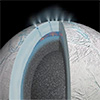 New research finds that life can be detected in a single ice grain containing one bacterial cell or portions of a cell. The results suggest that if life similar to that on Earth exists on these planetary bodies, that this life should be detectable by instruments launching in the fall.
New research finds that life can be detected in a single ice grain containing one bacterial cell or portions of a cell. The results suggest that if life similar to that on Earth exists on these planetary bodies, that this life should be detectable by instruments launching in the fall.
Mar 25th, 2024
Read more
 Named 'Shakti' and 'Shiva', these appear to be the remnants of two galaxies that merged between 12 and 13 billion years ago with an early version of the Milky Way, contributing to our home galaxy's initial growth.
Named 'Shakti' and 'Shiva', these appear to be the remnants of two galaxies that merged between 12 and 13 billion years ago with an early version of the Milky Way, contributing to our home galaxy's initial growth.
Mar 22nd, 2024
Read more
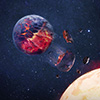 At least one in a dozen stars show evidence of planetary ingestion according to new research.
At least one in a dozen stars show evidence of planetary ingestion according to new research.
Mar 20th, 2024
Read more
 Scientists have for the first time created a giant quantum vortex to mimic a black hole in superfluid helium that has allowed them to see in greater detail how analogue black holes behave and interact with their surroundings.
Scientists have for the first time created a giant quantum vortex to mimic a black hole in superfluid helium that has allowed them to see in greater detail how analogue black holes behave and interact with their surroundings.
Mar 20th, 2024
Read more
 The new map includes around 1.3 million quasars from across the visible universe and could help scientists better understand the properties of dark matter.
The new map includes around 1.3 million quasars from across the visible universe and could help scientists better understand the properties of dark matter.
Mar 18th, 2024
Read more
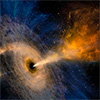 The current theoretical model for the composition of the universe is that it's made of normal matter, dark energy and dark matter. A new study challenges this.
The current theoretical model for the composition of the universe is that it's made of normal matter, dark energy and dark matter. A new study challenges this.
Mar 15th, 2024
Read more
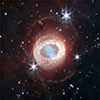 It looks like the same mechanism that breaks up airplane contrails might be at play in forming the clumps of hydrogen gas that ring the remnant of supernova 1987A.
It looks like the same mechanism that breaks up airplane contrails might be at play in forming the clumps of hydrogen gas that ring the remnant of supernova 1987A.
Mar 13th, 2024
Read more
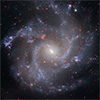 Observations from Hubble and Webb rule out measurement errors, suggesting missing pieces in understanding the universe's evolution.
Observations from Hubble and Webb rule out measurement errors, suggesting missing pieces in understanding the universe's evolution.
Mar 11th, 2024
Read more
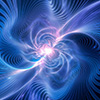 New technique can detect gravitational waves that oscillate just once every thousand years.
New technique can detect gravitational waves that oscillate just once every thousand years.
Mar 8th, 2024
Read more
 The James Webb Space Telescope makes one of the most unexpected findings within its first year of service: A high number of faint little red dots in the distant Universe could change the way we understand the genesis of supermassive black holes.
The James Webb Space Telescope makes one of the most unexpected findings within its first year of service: A high number of faint little red dots in the distant Universe could change the way we understand the genesis of supermassive black holes.
Mar 7th, 2024
Read more
 Open any astronomy textbook to the section on white dwarf stars and you'll likely learn that they are 'dead stars' that continuously cool down over time. New research is challenging this theory.
Open any astronomy textbook to the section on white dwarf stars and you'll likely learn that they are 'dead stars' that continuously cool down over time. New research is challenging this theory.
Mar 6th, 2024
Read more
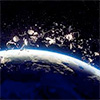 In a new study, investigators demonstrate the benefits of using deep learning to detect space objects, debris, and satellites in Low Earth Orbit.
In a new study, investigators demonstrate the benefits of using deep learning to detect space objects, debris, and satellites in Low Earth Orbit.
Mar 6th, 2024
Read more
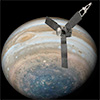 Tthese observations provide key constraints on the potential oxygenation of Europa's subsurface ocean.
Tthese observations provide key constraints on the potential oxygenation of Europa's subsurface ocean.
Mar 5th, 2024
Read more
 Up to a certain point, very luminous stars can have a positive effect on the formation of planets, but from that point on the radiation they emit can cause the material in protoplanetary discs to disperse.
Up to a certain point, very luminous stars can have a positive effect on the formation of planets, but from that point on the radiation they emit can cause the material in protoplanetary discs to disperse.
Mar 1st, 2024
Read more
 Researchers have found water vapour in the disc around a young star exactly where planets may be forming.
Researchers have found water vapour in the disc around a young star exactly where planets may be forming.
Mar 1st, 2024
Read more
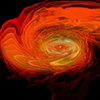 Breakthrough discovery puts astronomers one step closer to solving the mystery of the origin of elements that are heavier than iron.
Breakthrough discovery puts astronomers one step closer to solving the mystery of the origin of elements that are heavier than iron.
Feb 29th, 2024
Read more
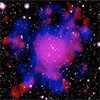 The James Webb Space Telescope has just obtained the first spectra of very low-mass galaxies less than a billion years after the Big Bang. A technological feat made possible by the unique combination of JWST sensitivity and the gravitational lensing effect of the Abell 2744 cluster.
The James Webb Space Telescope has just obtained the first spectra of very low-mass galaxies less than a billion years after the Big Bang. A technological feat made possible by the unique combination of JWST sensitivity and the gravitational lensing effect of the Abell 2744 cluster.
Feb 28th, 2024
Read more
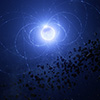 White dwarfs cannibalize planets, leaving scars. Their magnetic fields play a key role, dragging planetary debris onto the stellar surface.
White dwarfs cannibalize planets, leaving scars. Their magnetic fields play a key role, dragging planetary debris onto the stellar surface.
Feb 26th, 2024
Read more
 New research finds that life can be detected in a single ice grain containing one bacterial cell or portions of a cell. The results suggest that if life similar to that on Earth exists on these planetary bodies, that this life should be detectable by instruments launching in the fall.
New research finds that life can be detected in a single ice grain containing one bacterial cell or portions of a cell. The results suggest that if life similar to that on Earth exists on these planetary bodies, that this life should be detectable by instruments launching in the fall.
 Subscribe to our Space Exploration News feed
Subscribe to our Space Exploration News feed















